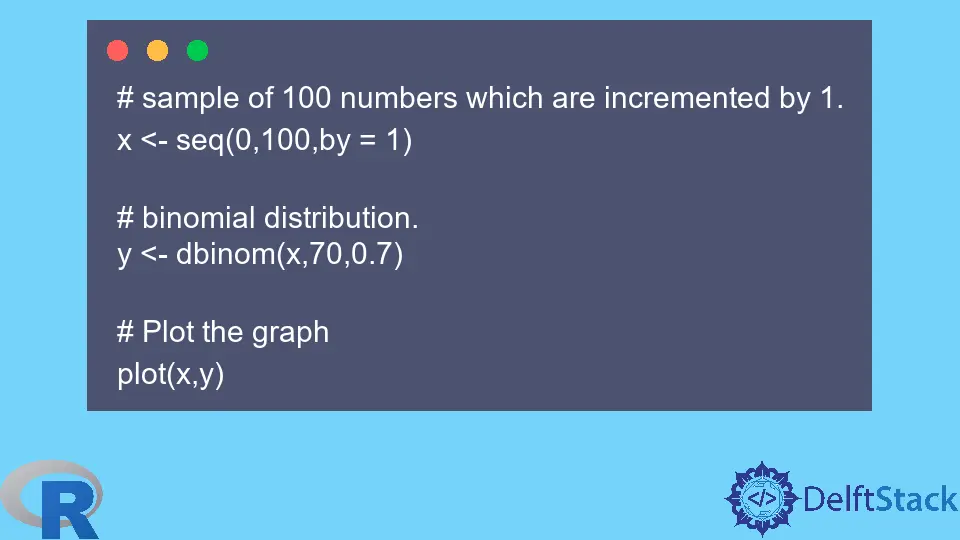How to Perform Binomial Distribution in R
- What is Binomial Distribution?
-
Using the
dbinomFunction -
Using the
pbinomFunction -
Using the
qbinomFunction -
Using the
rbinomFunction - Conclusion
- FAQ

Understanding binomial distribution is essential for statisticians and data analysts. It provides a way to model the number of successes in a fixed number of independent trials, each with the same probability of success.
In this tutorial, we will dive into how to perform binomial distribution in R, a powerful programming language widely used for statistical analysis. Whether you are a beginner or looking to brush up on your skills, this guide will walk you through the steps with clear examples and explanations. By the end, you will have a solid grasp of how to implement binomial distribution in your data analysis projects.
What is Binomial Distribution?
Before we jump into the code, let’s clarify what binomial distribution is. It’s a discrete probability distribution that describes the number of successes in a fixed number of trials. Each trial has only two possible outcomes: success or failure. The binomial distribution is characterized by two parameters: the number of trials (n) and the probability of success in each trial (p).
In R, we can easily perform binomial distribution calculations using built-in functions. Let’s explore the methods to do this.
Using the dbinom Function
The dbinom function in R allows you to compute the probability of getting exactly k successes in n trials. This function is particularly useful when you want to find the probability of a specific outcome.
# Parameters
n <- 10 # number of trials
p <- 0.5 # probability of success
k <- 5 # number of successes
# Calculate the probability
probability <- dbinom(k, n, p)
probability
Output:
0.24609375
In this example, we set the number of trials to 10 and the probability of success to 0.5. We want to find the probability of getting exactly 5 successes. The dbinom function computes this probability, which is approximately 0.246. This means there is about a 24.6% chance of getting exactly 5 successes in 10 trials.
Using the pbinom Function
If you’re interested in finding the cumulative probability of achieving up to k successes, the pbinom function is your go-to option. It calculates the probability of getting k or fewer successes in n trials.
# Parameters
n <- 10 # number of trials
p <- 0.5 # probability of success
k <- 5 # number of successes
# Calculate cumulative probability
cumulative_probability <- pbinom(k, n, p)
cumulative_probability
Output:
0.5
Here, we again set the number of trials to 10 and the probability of success to 0.5. Using pbinom, we find the cumulative probability of getting 5 or fewer successes. The result is 0.5, indicating a 50% chance of achieving 5 or fewer successes in 10 trials. This is particularly useful for understanding the distribution of outcomes over multiple trials.
Using the qbinom Function
The qbinom function is useful when you want to determine the number of successes corresponding to a specific cumulative probability. This is often referred to as the quantile function.
# Parameters
n <- 10 # number of trials
p <- 0.5 # probability of success
p_value <- 0.75 # cumulative probability
# Find the quantile
quantile <- qbinom(p_value, n, p)
quantile
Output:
8
In this code, we set the cumulative probability to 0.75. The qbinom function tells us the number of successes we can expect to achieve or exceed with a 75% probability. The result is 8, meaning there is a 75% chance of getting 8 or fewer successes in 10 trials. This function is particularly useful in risk assessment and decision-making scenarios.
Using the rbinom Function
Finally, if you want to generate random numbers following a binomial distribution, the rbinom function is the way to go. This function can simulate outcomes based on your parameters.
# Parameters
n <- 10 # number of trials
p <- 0.5 # probability of success
size <- 100 # number of random samples
# Generate random samples
random_samples <- rbinom(size, n, p)
head(random_samples)
Output:
[1] 4 5 6 3 5 4
In this example, we generate 100 random samples of successes from 10 trials with a success probability of 0.5. The head function displays the first six samples. This can be particularly useful for simulations and Monte Carlo methods, where you want to understand the variability of outcomes.
Conclusion
In this tutorial, we explored how to perform binomial distribution in R using various built-in functions. From calculating specific probabilities with dbinom to simulating random samples with rbinom, R provides a comprehensive toolkit for working with binomial distributions. Understanding these functions can significantly enhance your data analysis capabilities, allowing you to make informed decisions based on statistical evidence. Whether you’re working on a research project or analyzing data for business insights, mastering binomial distribution in R is a skill worth having.
FAQ
-
What is binomial distribution?
Binomial distribution models the number of successes in a fixed number of independent trials, each with the same probability of success. -
How do I calculate the probability of getting exactly k successes in R?
You can use thedbinomfunction in R to calculate the probability of getting exactly k successes in n trials. -
What function do I use to find cumulative probabilities in R?
Thepbinomfunction is used to find cumulative probabilities for binomial distributions. -
Can I generate random samples following a binomial distribution in R?
Yes, you can use therbinomfunction to generate random samples from a binomial distribution. -
How can I find the number of successes corresponding to a specific cumulative probability?
Theqbinomfunction allows you to determine the number of successes for a given cumulative probability.
Sheeraz is a Doctorate fellow in Computer Science at Northwestern Polytechnical University, Xian, China. He has 7 years of Software Development experience in AI, Web, Database, and Desktop technologies. He writes tutorials in Java, PHP, Python, GoLang, R, etc., to help beginners learn the field of Computer Science.
LinkedIn Facebook